Artnet Auctions
The Expert Edit: 6 Standout Lots from Artnet’s Post-War and Contemporary Art Sale
Artnet Auctions specialists weigh in on their picks from the Post-War and Contemporary Art sale.
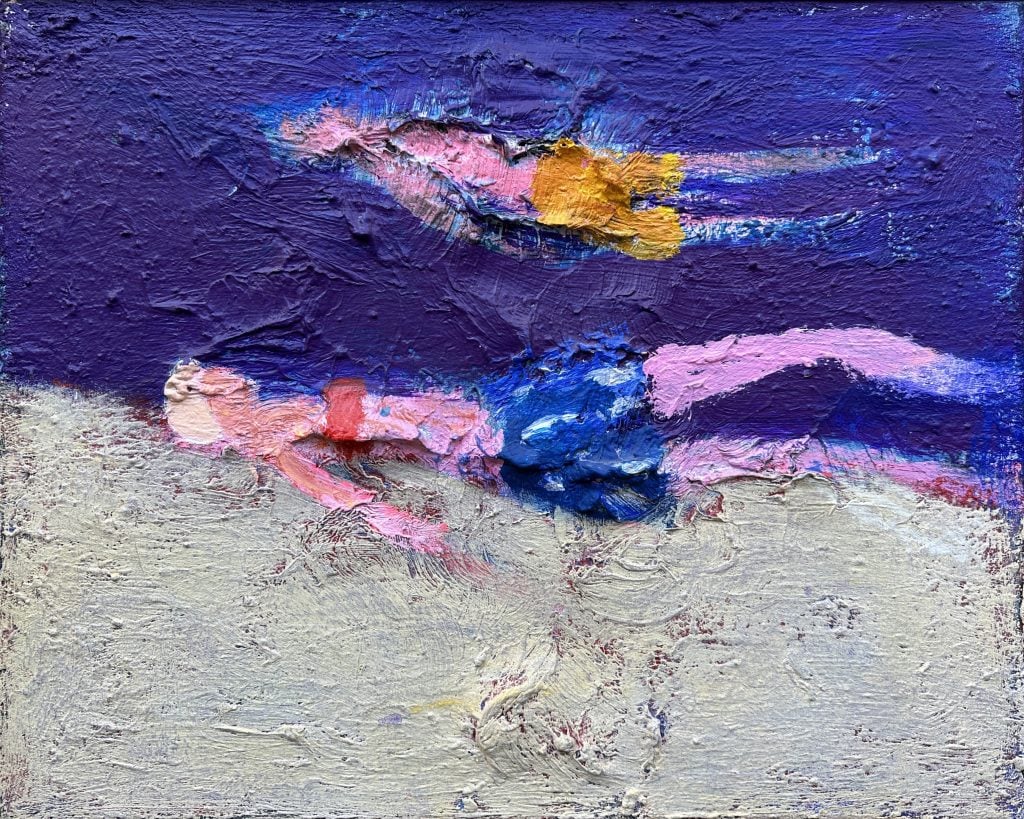
Artnet Auctions specialists weigh in on their picks from the Post-War and Contemporary Art sale.

Artnet Auctions

Live for bidding now through November 25, 2024, Artnet Auctions’ Post-War and Contemporary Art sale returns this season bringing together a range of work—from paintings and works on paper to installation and photography—by some of today’s most sought-after artists. From Yayoi Kusama and Yoshitomo Nara to Tom Wesselmann and Barbara Kruger, there is a lot to explore.
Below, the team behind the sale walks us through a number of the sale’s top lots, all of which can be browsed along with much more within the Post-War and Contemporary Art sale.
Yoshitomo Nara, Untitled (Clifford Chance) (2007)
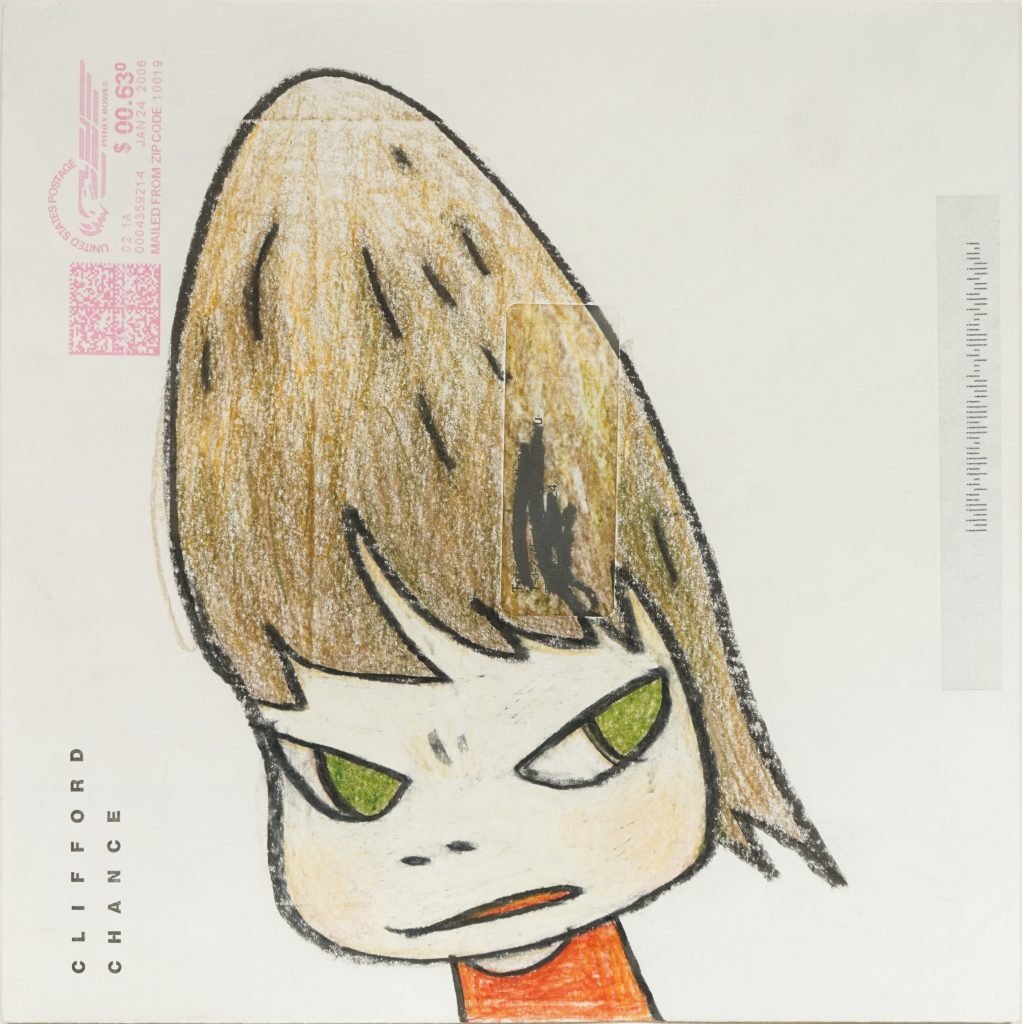
Yoshitomo Nara, Untitled (Clifford Chance) (2007). Est. $200,000–$300,000.
The Japanese artist went to graduate school in Germany and found success early in his career. With his signature style of comic-reminiscent figures with big eyes and childish postures, his artistic language speaks to both Eastern and Western cultures alike. Nara loves to incorporate found objects into his practice, such as the envelope that serves as the substrate for our drawing. Our example features a strong facial expression that one could interpret as anger. The artist is known for his playful practice that makes his figures appear sweet and sinister at the same time.
—Johannes Vogt, Head of Post-War and Contemporary Art
Lee Ufan, From Line 80041 (1980)

Lee Ufan, From Line 80041 (1980). Est. $400,000–$600,000.
Born in South Korea, educated in Japan, and internationally recognized by museums and collectors alike, Lee Ufan’s work has found great popularity over the last two decades. The artist has been honored with a strong presence in the minimalist-museum complex on Naoshima, Japan. Ufan’s degree in philosophy paved the way for his meditative approach to art making. Eastern philosophy and the concept of stillness are closely related. Some of the earliest series in Ufan’s paintings are From Point and From Line. Both represent extensive bodies of works where the artist explored how these opposing concepts can be used to create convincing compositions, in an ongoing, multi-year series. Our example stands out for its unusual format: slim and tall, it accommodates just three lines in the artist’s signature blue.
—Johannes Vogt, Head of Post-War and Contemporary Art
Tom Wesselmann, Still Life with Four Roses and Pear (Blue Pillow)(With Black)(Filled In) (1993)
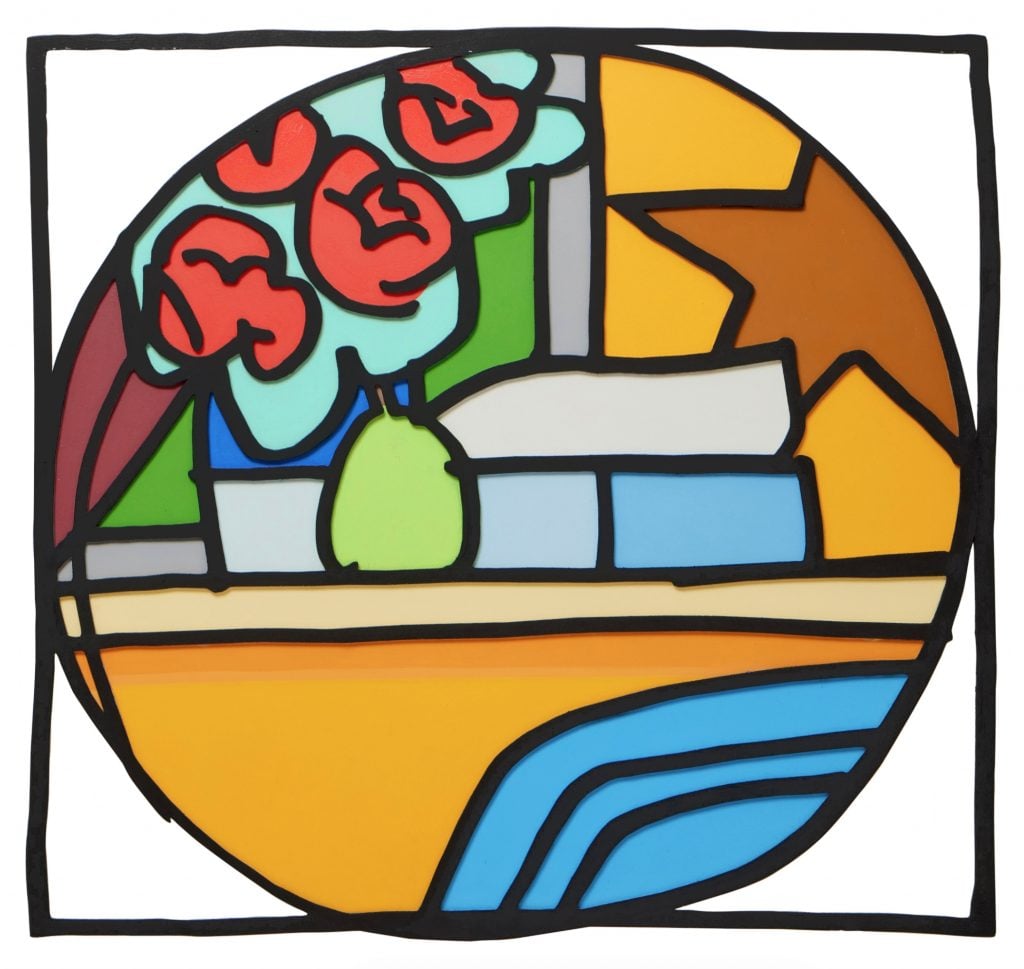
Tom Wesselmann, Still Life with Four Roses and Pear (Blue Pillow)(With Black)(Filled In) (1993).
In the early 1980’s, Tom Wesselmann reduced his drawing to the most basic lines, what followed became known as his ‘Steel Cut’ drawings. Originally in steel, hand-cut by the artist, and then perfected by fabricator Alfred Lippincot, Wesselmann’s time-honored subjects entered the future as he employed laser cutting to bring his lines to life off the paper. The artist considered these works an extension of his drawing and gave each its own matter-of-fact title. Still Life with Four Roses and Pear (Blue Pillow)(With Black)(Filled In) (1993), alludes both to the artist’s earliest 1962 ‘Still Life’ collages, several of which included the bottled ‘Four Roses’ brand liquor, as well as his most well-known ‘Reclining Nudes,’ suggested by the subtle inclusion of the blue pillow in this composition.
—Jason Rulnick, Senior International Specialist, Post-War and Contemporary Art
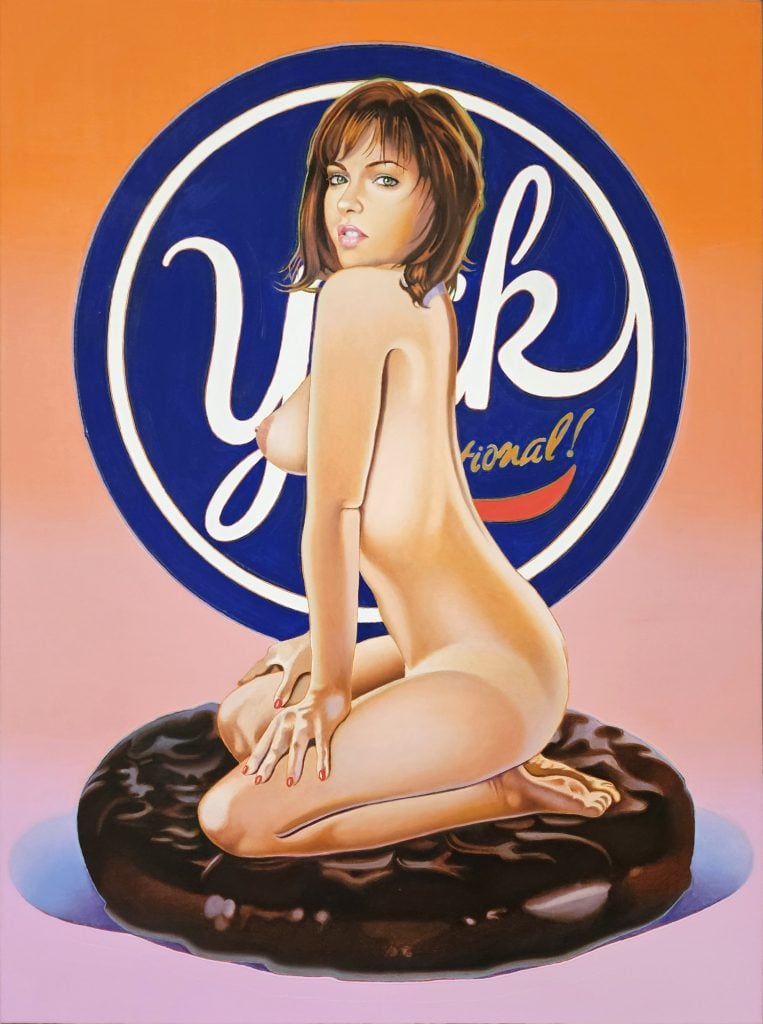
Mel Ramos, Mint Pattie (2011). Est. $80,000–$120,000.
In Mint Pattie (2011), Mel Ramos brings together the worlds of consumer culture and classical beauty through his signature Pop art lens. A female figure emerges provocatively from a York Peppermint Pattie wrapper, blending the allure of advertising with the aesthetics of the female form. By placing this figure within the context of a recognizable (and underrated) candy brand, Ramos comments on the commodification of women. The juxtaposition of figure and product challenges viewers to consider how advertising shapes perceptions of desire and beauty, making Ramos’s work both a playful homage to pop culture and a critique of its objectifying tendencies.
—Lily Greenwald, Associate, Post-War and Contemporary Art
Larry Poons, Rattled 90A-8 (1990)
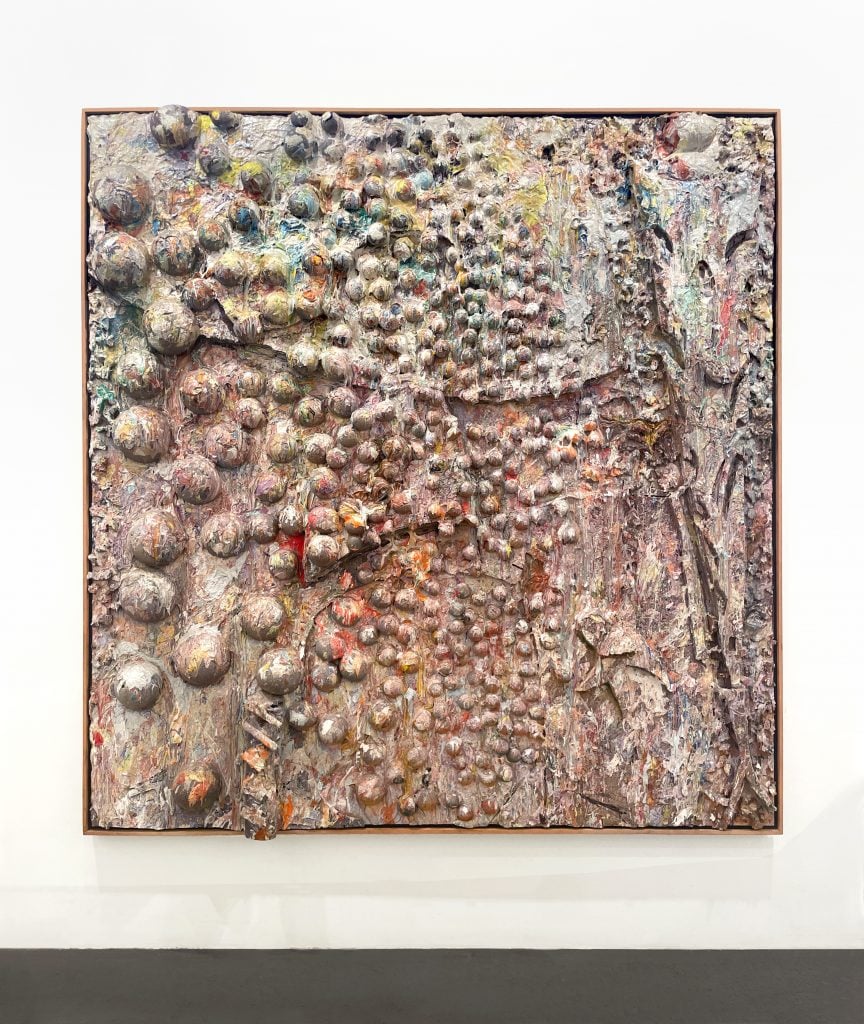
Larry Poons, Rattled 90A-8 (1990). Est. $40,000–$60,000.
In the 1980s, Poons’s practice took a more sculptural approach as he adhered foam rubber trimmings and studio detritus to his canvas to create exciting, cavernous topographies at a daunting scale. Over his career, Poons has shifted from poured expanses, wishing to not leave a trace of his hand, to all-over compositions aligned with Lyrical abstraction, very much relying on the subtle touches he sought to eliminate originally. Rattled 90A-8 (1990), brilliantly typifies an intermediate point in this journey, as the artist begins to intervene with the gravitational flow of the medium. While there may have been obstacles to the paint, there was no limit to Poons’s penchant for experimentation.
—Jason Rulnick, Senior International Specialist, Post-War and Contemporary Art
Nicolas Party, Untitled (Christmas Card) (2018)
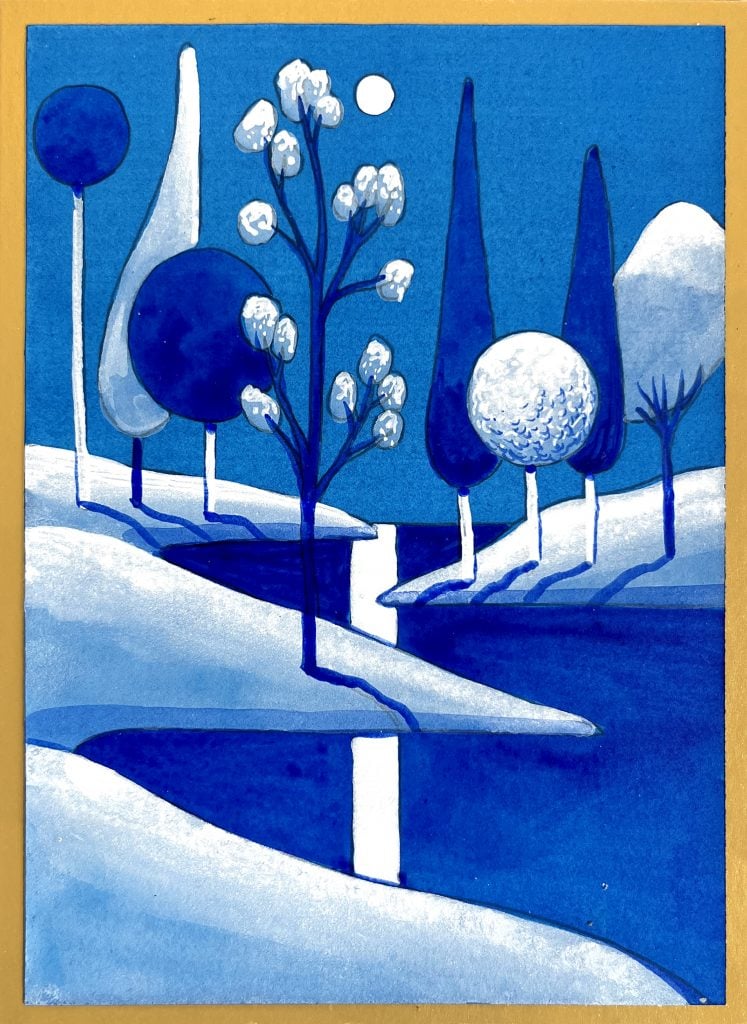
Nicolas Party, Untitled (Christmas Card) (2018). Est. $25,000–$40,000.
This holiday card composition captures Nicolas Party’s distinct approach to reimagining the natural world through bold color and stylized forms. Vibrant hues of blues and whites are carefully layered to create soft gradients, and the trees are rendered in simplified, rounded shapes that give them a sculptural, almost otherworldly quality. Drawing on both classical landscape traditions and contemporary aesthetics, it exemplifies Party’s ability to evoke emotion and intrigue through a harmonious interplay of color, form, and texture, capturing nature’s beauty in a way that feels both familiar and fantastical.
—Lily Greenwald, Associate, Post-War and Contemporary Art